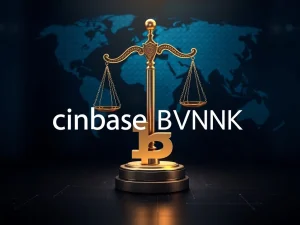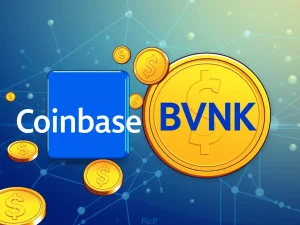Tokenization Revolution: Robinhood Crypto Exec Sees Opportunity in Accessible Investing

Are you looking for new ways to access investment opportunities previously out of reach? The world of finance is evolving rapidly, and Tokenization is at the forefront of this change. According to a top executive at Robinhood, this technology holds significant potential to democratize investing.
How Tokenization Boosts Financial Accessibility
Johann Kerbrat, Senior Vice President and General Manager of Robinhood Crypto, recently highlighted the transformative power of tokenization at the Consensus 2025 event. He emphasized its crucial role in enhancing Financial Accessibility by opening doors to asset classes traditionally limited to a select few.
Kerbrat pointed out that assets like private equity and real estate are currently accessible to a small percentage of the population, often requiring accredited investor status or substantial capital. He used the example of purchasing property in a high-cost area like New York:
- Direct ownership is prohibitively expensive for most.
- Tokenization allows for fractional ownership, enabling investors to buy ‘a piece of it’.
This fractionalization, facilitated by tokenization, makes previously illiquid or inaccessible assets easier to exchange and more widely available.
Understanding RWA Tokenization and Its Current Landscape
RWA, or Real-World Asset, tokenization involves creating digital tokens on a blockchain that represent ownership of physical or traditional financial assets. Robinhood is among several major financial firms exploring this space, joining names like BlackRock, Franklin Templeton, Apollo, and VanEck.
While the concept is pitched as a way to improve accessibility, current data shows a concentration of ownership. As of mid-May, the total market capitalization of onchain RWA stood at $22.5 billion across just over 100,000 asset holders. This translates to an average holding of over $220,000 per holder, indicating that participation is currently skewed towards high-net-worth individuals rather than the broader retail market.
Despite this current concentration, the underlying technology of tokenization offers the potential for future democratization as the market matures and regulatory frameworks develop.
The Evolving Role of Stablecoins
Beyond tokenization, Kerbrat also shared insights on Stablecoins, a key development in the current crypto cycle. He predicted a significant increase in the number and specialization of stablecoins, moving beyond the current dominance of dollar-pegged options like USDT and USDC, which together account for a vast majority of the market share.
Kerbrat suggested that future stablecoins could be tailored for specific use cases or markets. For instance, a stablecoin might be optimized for cross-border transfers between specific regions, such as the US and Singapore. This shift implies a move towards platforms capable of managing a diverse ecosystem of specialized stablecoins, rather than relying on a few dominant ones.
The increasing demand for stablecoins pegged to currencies other than the dollar has also been noted by industry experts, reflecting a growing need for diverse digital currency options in the global financial landscape.
Conclusion: A Step Towards More Inclusive Investing?
The views shared by the Robinhood Crypto executive underscore the potential of tokenization and RWA to significantly enhance Financial Accessibility. While the RWA market is still nascent and currently concentrated, the technological foundation exists to allow for fractional ownership and easier exchange of valuable assets. Coupled with the predicted evolution of Stablecoins into a more specialized and diverse ecosystem, these developments paint a picture of a financial future where investing could become genuinely more open and available to a wider population through Tokenization.







